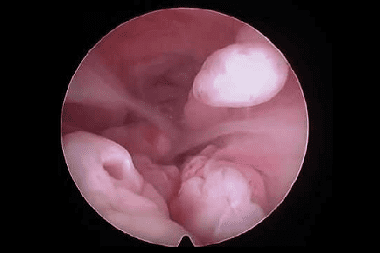Gynecology and Mammology >>>> Polyps in the uterus
Polyps in the uterus.

Endometrial hyperplasia, accompanied by the formation of outgrowths of various heights from the basal layer of the endometrium, is called uterine polyps.
Polyps in the uterus are considered benign neoplasms, but nevertheless, they are considered precancerous and must be removed.
According to their structural qualities, uterine polyps can differ:
- glandular, overgrown from the glandular layer of the endometrium,
- glandular fibrous, when in addition to glandular and connective tissue (stroma),
- fibrous, which are represented by outgrowths of the connective tissue layer,
- adenomatous polyps, consisting of glandular tissue with cells prone to proliferation and altered properties of glandular tissue, are the most dangerous polyps that tend to degenerate into cancerous formations.
The reasons for the formation of uterine polyps can lie in different areas of disorders:
- endocrine disorders, in particular disorders of the production of sex hormones,
- the tendency of tissues to proliferate,
- chronic infections and inflammation of the endometrial tissue.
Signs of uterine polyps:
- bloody discharge from the genitals outside of menstruation of varying degrees of intensity,
- whitish mucous discharge,
- lower abdominal pain, pain during intercourse.

To diagnose uterine polyps, ultrasound, scrapings and examination of endometrial tissues are used. In modern conditions, the diagnosis and identification of endometrial polyps is carried out using histological studies. For this, a hysteroscopic examination is carried out, a hysteroscope is inserted into the uterine cavity and the growths are visually examined, studying their shape, number, location, then the outgrowths are removed, followed by a study of the removed material.
Treatment of uterine polyps is cardinal - polypectomy is performed laparoscopically. If polyps of an adenomatous type are found, women of non-fertile age (premenopausal and postmenopausal age) undergo hysterectomy (removal of the uterus).

Read

Read



























